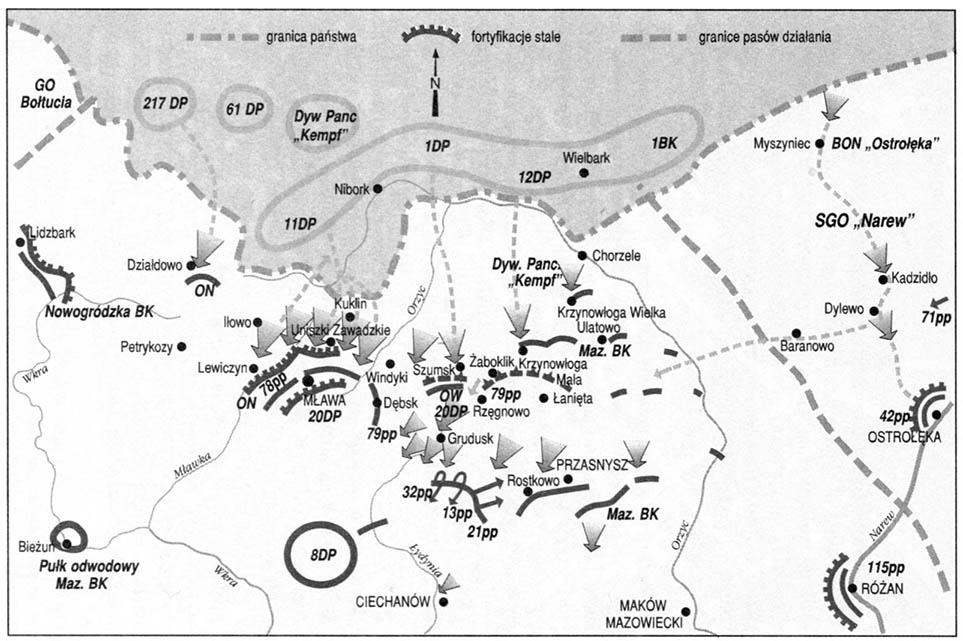Battle of Mława in 1939 r.
During the Polish-Bolshevik war 10 of August 1920 r. after two days of fierce fighting, the Bolshevik troops took the city. 22 of August 1920 r. near Mława it was encircled by 4 Polish divisions of the cavalry corps under the command of Gay. However, the Bolsheviks managed to get out of the encirclement. In the interwar period, the city became an important industrial center–commercial and cultural. Issued here 3 newspapers, w 1926 r. a regional museum was established. At that time, Jews constituted a significant group among the inhabitants of Mława. W 1939 r. they were ok. 6500. Two writers came from Mława: Josef Opatoszu (he wrote in Yiddish) and Jakir Warszawski (he wrote in Hebrew).
Wiktor Alter was also born in Mława (1890-1941), one of the Bund leaders (Universal Jewish Workers' Union) in Poland.
In the first days of September 1939 r. on the outskirts of Mława there were extremely fierce battles of close number 21 000 soldiers 20 DP from the army "Modlin" commanded by Col.. Wilhelm Lawicz-Liszka with the German troops from the composition of the 3rd army of gen. by Kiichlera (m.in. with the Panzer Division "Kempf"). They caused great damage to the city. It was close 800 Polish soldiers. Due to the September fights, the name of the city was mentioned on the Tomb of the Unknown Soldier in Warsaw. In years 1940-42 the Nazis created a ghetto in Mława for approx. 6000 Jews. During its liquidation, the Jews were transported to the extermination camp in Treblinka. There was also a camp for Soviet prisoners of war (Stalag 366) and a labor camp. 17-18 January 1945 The Germans shot them in the closed gravel pit in Kalkówka 364 persons: prisoners from the labor camp and almost 100 people a group of BCh guerrillas. Hanna Rudzka-Cybisowa came from Mława (1897-1988) – painter, co-founder of the artistic group of Kapists (Paris Committee), the author of mainly landscapes and still lifes, less often portraits.
Museum of Zawkrzeńska Region (ul. 3 House 5), created in 1926 r. as a regional museum. The pre-war collections were almost completely lost during World War II. W 1963 r. resumed its activity. The collections are related to the prehistory and history of the Zawkrze region, nature and art of the region. Among the exhibits, they deserve attention: a granite statue of a pagan deity from Małocin (gm. Bieżuń), dugout boat from the 15th-16th century, found in 1982 r. skeleton of a forest elephant from before 100 thousand. years, numismatic collections, judaica, collections of Polish painting, especially the group of paintings by Wojciech Piechowski (1849-1911), Historical collections related to World War II and exceptionally rich natural collections.
The Juszkiewicz Museum (ul. Gravel 32a). Made available to visitors in 1994 r. Collections related to the history of national liberation struggles in the region in the years 1863-1945. They were prepared by the historian and lawyer Dr.. have. Ryszard Juszkiewcz, author of several hundred scientific works and articles on the latest history of the region. Documents are of great scientific value, iconography, reports of event participants, letters and military. The collection is complemented by over 100 portraits of commanders of Polish troops from World War II.

